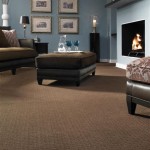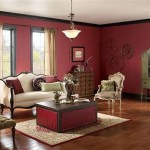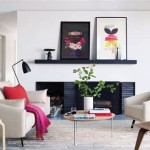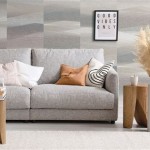Large Rugs: Transforming Living Room Spaces
Large rugs are a pivotal element in interior design, particularly within living rooms. Their considerable size allows them to unify disparate furniture arrangements, define distinct zones within open-concept spaces, and inject personality and warmth into otherwise sterile environments. The selection of a fitting large rug requires careful consideration of several factors, including room dimensions, existing decor, intended function, and personal aesthetic preferences.
A well-chosen large rug transcends mere floor covering; it becomes a foundational piece of the design, influencing the ambiance and visual harmony of the entire room. Conversely, an ill-fitting or poorly chosen rug can disrupt the flow, shrink the perceived space, and detract from the overall aesthetic. Therefore, understanding the principles of rug sizing, material selection, color palettes, and stylistic integration is essential for achieving a visually appealing and functional living room space.
Sizing and Placement Strategies
Determining the appropriate size of a large rug is paramount to achieving a balanced and harmonious look. A rug that is too small can make the room feel fragmented and disjointed, while one that is excessively large can overwhelm the space and encroach on the walls. The ideal size will depend on the dimensions of the living room and the arrangement of the furniture.
One common approach is to select a rug large enough to accommodate all the front legs of the main seating pieces, such as sofas and armchairs. This creates a unified and grounded look, visually connecting the furniture and defining the seating area. The rug should extend beyond the front legs by at least several inches, providing a comfortable and visually appealing buffer zone.
Another option, particularly suitable for smaller living rooms, is to place all the furniture entirely on the rug. This approach can make the room feel larger and more cohesive, as the rug acts as a unifying element that ties everything together. However, it is crucial to ensure that the rug is not so large that it reaches the walls, as this can make the room feel cramped.
Alternatively, some homeowners prefer to float their furniture entirely off the rug. In this scenario, the rug serves as an anchor point, defining the seating area without directly connecting to the furniture. This works well with smaller rugs, but with large rugs, it can make the space feel less intentional and more haphazard if not executed carefully. The rug should still be proportionally sized to the furniture arrangement, creating a distinct visual boundary.
When selecting a rug size, it is beneficial to measure the room accurately and use painter's tape to mark out the proposed rug dimensions on the floor. This allows for a visual representation of how the rug will fit within the space and helps to avoid costly mistakes. Consider the placement of doorways, walkways, and other architectural features to ensure that the rug does not obstruct movement or create a tripping hazard.
Material Considerations and Their Impact
The material of a large rug significantly influences its durability, texture, appearance, and maintenance requirements. Various materials offer different advantages and disadvantages, making careful consideration of lifestyle and functional needs essential.
Wool is a classic and highly regarded rug material known for its durability, natural stain resistance, and luxurious feel. Wool rugs are resilient, able to withstand heavy foot traffic and maintain their appearance for years. They also offer excellent insulation and sound absorption, contributing to a more comfortable and quieter living environment. However, wool rugs can be more expensive than other options and may require professional cleaning.
Synthetic materials such as nylon, polypropylene, and polyester offer more affordable alternatives to wool. These materials are typically stain-resistant, easy to clean, and less prone to fading. Nylon is particularly durable and can withstand heavy use, making it a suitable choice for high-traffic areas. Polypropylene is known for its affordability and water resistance, while polyester offers a soft and plush feel. However, synthetic rugs may not possess the same luxurious feel or longevity as wool rugs.
Natural fibers such as cotton, jute, and sisal provide a more casual and textured look. Cotton rugs are soft and comfortable underfoot, but they are less durable and stain-resistant than wool or synthetic options. Jute rugs offer a rustic and natural aesthetic, but they can be prone to shedding and may not be suitable for areas with high moisture exposure. Sisal rugs are durable and textured, offering a natural and earthy feel, but they can be rougher underfoot and may not be as comfortable as other materials.
The choice of rug material should also consider potential allergens. Wool rugs, while generally hypoallergenic, can sometimes trigger allergies in sensitive individuals. Synthetic rugs may be a better option for those with allergies, as they are less likely to harbor dust mites and other allergens. Regularly vacuuming and cleaning the rug can further minimize allergen buildup, regardless of the material.
Color, Pattern, and Style Integration
The color, pattern, and style of a large rug play a crucial role in defining the overall aesthetic of the living room. The rug should complement the existing decor, enhance the color palette, and contribute to the desired ambiance.
When selecting a rug color, consider the existing wall colors, furniture upholstery, and accent pieces. A neutral rug in shades of beige, gray, or ivory can provide a versatile backdrop that complements a wide range of color schemes. Alternatively, a rug with bold colors or patterns can serve as a focal point, adding visual interest and personality to the room. Be cautious in using bright or dark colors in smaller living rooms because that can make the room looks smaller than usual.
The pattern of the rug can also influence the overall feel of the space. Geometric patterns can add a modern and contemporary touch, while floral patterns can create a more traditional and romantic atmosphere. Abstract patterns can add a sense of artistry and intrigue, while solid-colored rugs offer a clean and minimalist look. The scale of the pattern should be proportional to the size of the rug and the room. A large-scale pattern may overwhelm a small room, while a small-scale pattern may get lost in a large space.
Consider the existing style of the living room when selecting a rug. A traditional living room may benefit from an ornate rug with intricate patterns and rich colors, while a modern living room may be better suited to a minimalist rug with clean lines and neutral tones. A bohemian living room may embrace a vibrant and eclectic rug with a mix of colors and patterns. The rug should seamlessly integrate into the existing style, enhancing the overall aesthetic and creating a cohesive look.
The texture of the rug can also add depth and dimension to the space. A shag rug can provide a cozy and inviting feel, while a flatweave rug offers a sleek and modern look. A high-pile rug can add a sense of luxury and comfort, while a low-pile rug is more practical for high-traffic areas. Consider the texture of the rug in relation to the other textiles in the room, such as upholstery, curtains, and cushions, to create a harmonious and layered look.
Lighting also greatly influence colors in your room. Consider the source of light and how it will change how the rugs look at the daytime versus in the evening with artificial lighting. Darker hues may look even darker in a room that has low light and the converse for the lighter hues that may look very bleached. This is something that you must consider before doing the final purchase.

How To Decorate A Large Living Room Ruggable Blog

26 Best Living Room Rug Ideas Area Design

How To Choose The Right Rug New York Times

51 Living Room Rug Ideas Stylish Area Rugs For Rooms

Does Your Room Need A Bigger Rug

Large Oriental Floor Carpets Under Dining Room Table Luxury Thick And Largepaintingart Com

6 Things To Consider When Choosing A Living Room Rug

How To Choose The Right Rug New York Times

How To Choose The Best Living Room Rug For Your Home

51 Living Room Rugs To Revitalize Your Space With Style








